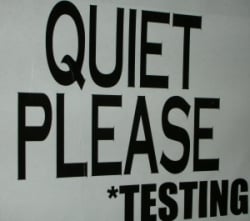 Starting in July this year, all construction products covered by harmonized European Standards under the Construction Products Regulation (CPR) will have to be CE marked to be legally sold in the UK and Ireland. This is a good thing for the building industry, as it will give purchasers the peace of mind that all the products they buy meet minimum criteria, as shown by CE Marking supported by test reports and documentation. For critical products, such as fixed fire fighting equipment, the CE marking has to be backed up by Independent testing and certification by a Notified Body.
Starting in July this year, all construction products covered by harmonized European Standards under the Construction Products Regulation (CPR) will have to be CE marked to be legally sold in the UK and Ireland. This is a good thing for the building industry, as it will give purchasers the peace of mind that all the products they buy meet minimum criteria, as shown by CE Marking supported by test reports and documentation. For critical products, such as fixed fire fighting equipment, the CE marking has to be backed up by Independent testing and certification by a Notified Body.
Why the Construction Products Regulation?
The CPR aims to simplify the EU compliance process of CE Marking for Construction products. It offers companies of all sizes equal freedom of movement in the EU for their products through the application of CE Marking, leveling the playing field when it comes to the costly testing and certification process.
What is covered by the CPR?
Thirty-five types of building, security and fire products fall under the jurisdiction of the CPR. These include fixed fire fighting equipment – specifically fire alarm and detection equipment, fire and smoke control, fire and explosion suppression products, fire stopping, fire sealing, fire protective and fire retardant products.
More choice for UK purchasers, vendors and installers?
In theory, from July the CPR will ensure that construction products can’t be declined entry into any EU country if they carry appropriate CE Marking. Manufacturers will only need to complete the CE Marking certification process once for their products to gain access to all EU markets.
However, where standards include performance classes each country is free to set the minimum classes acceptable in their Building Regulations and of course purchasers can still set any additional requirements they choose.
Be careful during the transition
Although many products are CE marked in Europe, not all are. Obtaining a CE Mark can be a lengthy and expensive process for fire safety products certified under attestation level 1. It requires independent testing, factory production control and certification.
This may mean that low volume products become too expensive to keep legal, so they may become unavailable after July. Buildings can have a long gestation period, and you need to be sure that products you are specifying now will still be available when you need to order them in 18 months time. Now is a good time to start checking that your suppliers have the right CE Marking or are taking steps to obtain it in time for the products you may need. If not, maybe they are not the right supplier for you.
If you want to know more
There’s a useful introductory guidance paper from the CPA available via this link:
www.constructionproducts.org.uk/publications/industry-affairs/display/view/construction-products-regulation/
 Paul is a Technical Director for Colt, experienced in smoke control, HVAC, solar shading and louvre systems.
Paul is a Technical Director for Colt, experienced in smoke control, HVAC, solar shading and louvre systems.
